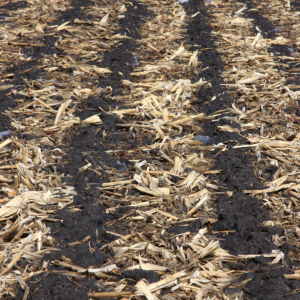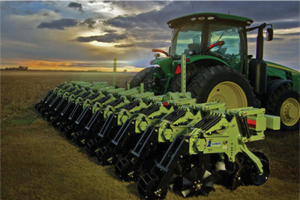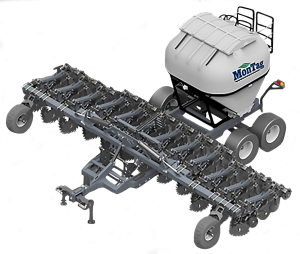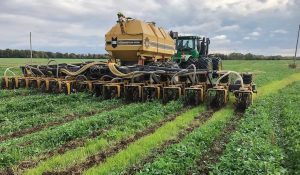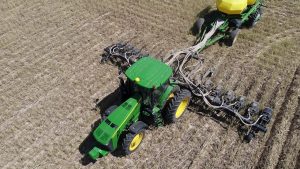Back to Innovator Next article Previous article
Written by: Emily McKague, on behalf of Georgian Central Regional Communication Coordinator
Grey Ag Services hosted a webinar series in February 2022 covering the basics of strip tillage. Presenters of part one included Ryan Benjamins of Benjamins Agronomy, and Michelle Durnin of Agri-Solve Inc.
There are a host of reasons why farmers look to adopt strip tillage practices, including decreased erosion and increased water infiltration, organic matter, carrying capacity, and resiliency to compaction. Cover crops can be left standing between fall-made strips and nutrient efficiencies are realized by banding fertilizer into the strips. Yields stay comparable to conventional tillage, but separate primary and secondary tillage passes may be eliminated. On some farms, spring tillage could be eliminated entirely. Benjamins suggested that a strip till unit with a fertilizer cart could theoretically replace an airflow, planter band, and primary and secondary tillage equipment—which all translates to considerable savings in equipment ownership.
A strip tillage system doesn’t look the same for everyone. On farms with heavier soils all strip tillage may be done in the fall, however on lighter soils there is more freedom to incorporate fall or spring tillage as desired. Strip till can be implemented between nearly any crop with a 20” or greater row width, although the most common scenario might be before corn, after soybeans.
Durnin and Benjamins gave a run-down of some common units they have experience with:
Orthman 1tRIPr – A heavy shank unit with manual adjustments. Includes fertilizer deflectors, allowing producers to place some of their fertilizer at the bottom of the shank, and some higher in the strip.
TruAg Terraforge – The “Cadillac” of strip tillers, also a heavy shank unit. Has more easily adjusted shanks, air adjusted row cleaners, and includes soil containment discs which are not seen on the Orthman.
Soil Warrior – A heavy coulter unit. Handles heavy ground well and is great in lighter soil with lots of stones. It has the option of changing to lighter coulter discs for spring freshening. Comes with a fertilizer cart and a dual bin option.
Dawn Pluribus – A lighter unit that is great for those who mainly no-till and need something for limited use. It gets through cover crops well, starts at a lower price point, and is best suited to lighter soils.
As a generality, it seemed that a shank unit is best in heavy soils while coulter units do better work in light or stony areas. Coulters create a soil mixing action
which means that fertilizer is distributed throughout the strip. Shank units place fertilizer at the bottom of the strip and can be adjusted with deflectors to allow a portion of fertilizer out a couple inches higher.
Durnin and Benjamins cautioned that when pricing out a strip till unit, producers should not forget to
account for horsepower needed to run the unit and an RTK implement guidance system. For the most success with strip tillage they strongly recommended not leaving RTK behind.
Other things to keep in mind include the systemic changes related to strip till; although workload may be lessened, the operator in the tractor seat now needs the skill to run a guidance system, keep tabs on
fertilizer output, and work the field all at once, which is different than in a conventional system.
Like any new skill, expertise develops over time and practice pays off. Strip till is a 30–40 year old practice just getting new attention nowadays. If it’s something you are considering, reach out to others already using strip tillers on soil types like yours, and draw on their experience. Research, patience and a little bit of practice will see you successful in no time!
